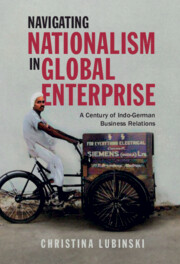Book contents
- Navigating Nationalism in Global Enterprise
- Cambridge Studies in the Emergence of Global Enterprise
- Navigating Nationalism in Global Enterprise
- Copyright page
- Dedication
- Contents
- Figures
- Tables
- Acknowledgments
- Introduction
- Part I Nationalism and Competitive Dynamics
- Part II Emergent Strategy in a World of Nations
- Conclusion: Rehistoricizing Nations
- Appendices
- Bibliography
- Index
Introduction
Published online by Cambridge University Press: 27 October 2022
- Navigating Nationalism in Global Enterprise
- Cambridge Studies in the Emergence of Global Enterprise
- Navigating Nationalism in Global Enterprise
- Copyright page
- Dedication
- Contents
- Figures
- Tables
- Acknowledgments
- Introduction
- Part I Nationalism and Competitive Dynamics
- Part II Emergent Strategy in a World of Nations
- Conclusion: Rehistoricizing Nations
- Appendices
- Bibliography
- Index
Summary
The introduction argues that while globalization and economic nationalism are both important forces shaping how businesses act in the world, history and business scholars have paid significantly more attention to globalization than to economic nationalism. What we are left with is a historiography moving at two speeds. Whereas our understanding of globalization and business has been transformed over the past thirty years, the impact of nationalism on business strategy – including but not limited to the risk management strategies – remains rather obscure. To mitigate this shortcoming and untangle the convoluted processes by which nationalism shapes business strategy, the book explores in detail German businesses’ strategies in India in the context of the slowly unfolding process of decolonization. To that end, the introduction offers both a theoretical framework – Friedrich List’s elaborations on nationalist ideologies – and previews the main arguments of the book.
Information
- Type
- Chapter
- Information
- Navigating Nationalism in Global EnterpriseA Century of Indo-German Business Relations, pp. 1 - 22Publisher: Cambridge University PressPrint publication year: 2022
